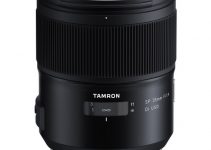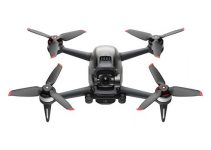Tons of huge cinema cameras were released this year. Huge in terms of announcement but small in stature is the Canon EOS C70. It came in with C300-level specs but a more mirrorless form factor. Also, it is about half the price of a C300 Mark III. That is very appealing.
Dom from LensProToGo thinks the C70 is a super interesting release, partially just because it is interesting and partially because he has been getting a ton of questions about it. Considering the C70 splits the difference between Canon’s mirrorless system and Cinema EOS system, Dom approaches this video by detailing which system the C70 gets each feature from.
Keeping things off with the form factor, Dom immediately identifies it as more of an R5-like design. The grip and RF lens mount are definitely mirrorless features, however it does add a good bit of thickness and active cooling (perhaps a notorious omissions from the R5).
With a bunch of customizable buttons (13) and inputs you would likely never find on a mirrorless body you have to consider it is showing a bit of cinema heritage.
Body design awards a point to both mirrorless and cinema here. Though the RF mount is definitely going towards mirrorless and the larger BP-A series battery going toward cinema. Things are even up at two apiece.
For media, the C70 has a couple of SD card slots on the grip side. This is very different from the use of CFexpress, at least in part, on both the R5 and on the cinema side. Still, SD cards on the grip are more of a mirrorless thing to do. Also, there is a touchscreen with touch autofocus, another thing that comes first from Canon’s photo side.
A new addition to the C70 is the use of mini-XLR, which hasn’t appeared in either side yet. There are cinema-style audio controls though, so point there. Another thing to consider is the use of a full-size HDMI. There is no SDI to be found. This is another split, but the use of HDMI is closer to mirrorless, even if the full-size port is rare on mirrorless. So, half point to mirrorless.
Count is now 4.5 points to mirrorless and 3 to Cinema EOS.
Dom takes a moment to discuss the actual tech and how they were able to make this camera so quickly. The main thing is the use of the same 4K Dual Gain Output Super 35mm sensor as that of the C300 Mark III. This brings with it up to 16 stops of dynamic range and Dual Pixel CMOS AF. Definite point to Cinema EOS. Another advantage from cinema side is the internal ND system.
Now we are up to 4.5 points for mirrorless and 5 for Cinema EOS.
Moving on to codecs we have both H.264 and H.265 options for 10-bit 4:2:2 internal recording. 4K and 2K are available. These options aren’t unique to either system.
Dom gives the point of the mirrorless family because the R5 and R6 are packed with options like 4K 120p. I wouldn’t do that personally cause the frame rates and options match the C300 Mark III near exactly, but okay.
Menu systems are closer to the C200 with some nice upgrades and touch functionality. Being in line with cinema controls put this point clearly in the cinema camp.
In the end the C70 tallies up 5.5 points for mirrorless cameras and 6 points for cinema cameras.
Honestly, I think it should’ve been more towards the cinema line. This is a baby C300 Mark III in so many ways. It’s a cinema camera in functionality with a compact, mirrorless design.
The R5 and R6 have so many limitations for video that this camera just doesn’t have. The C70 is a perfect match to current cinema cameras or for people looking for a compact or more affordable camera with pro cinema features.
[source: LensProToGo]
Order Links:
- Canon EOS C70 Cinema Camera (B&H)
- Canon EOS R5 Mirrorless Camera (B&H)
- Canon EOS C300 Mark III Cinema Camera (B&H)
Disclaimer: As an Amazon Associate partner and participant in B&H and Adorama Affiliate programmes, we earn a small comission from each purchase made through the affiliate links listed above at no additional cost to you.




